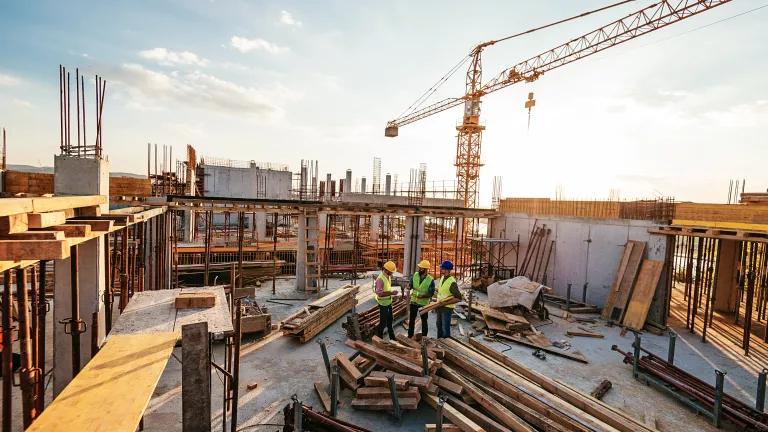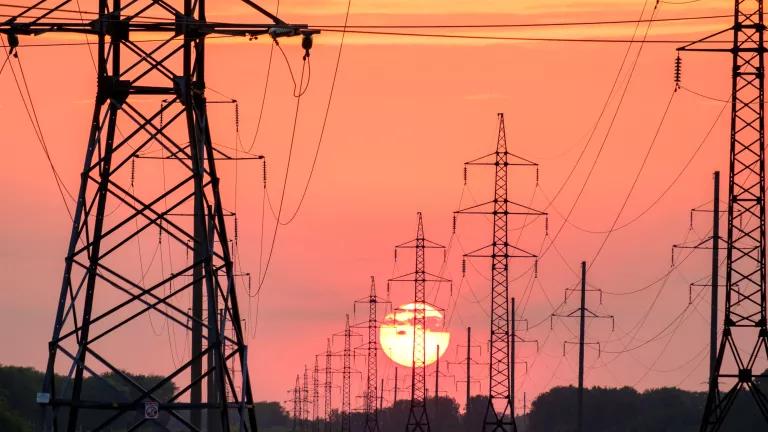This post is part of a blog series for Getting Climate Smart, a joint effort by NRDC and American Rivers to guide state action on climate and water preparedness.
Like many states in the western U.S., California struggles with a problem balancing water supplies and demands, and climate change is exacerbating these pressures. Almost three-quarters of the state’s available water supply originate in the northern third of the state while 80 percent of water demand is located in the southern two-thirds. The state’s Mediterranean climate with wet winters and dry summers also intensifies this water imbalance. To address the geographic and seasonal disparities over water availability, the state has a complex network of water storage and transport facilities. The two largest, the State Water Project and Central Valley Project, carry a quarter of the state’s total developed water supply (the state’s other major imported water supplies come from the Colorado River).
At the heart of the state’s water supply network is the Bay Delta, where the Sacramento and San Joaquin rivers converge before making their way to San Francisco Bay. About 30 percent of Southern California’s water supply is transported through the Bay Delta region, helping to provide water supplies for more than 25 million people and millions of acres of farmland. However, excessive water withdrawals historically have led to the degradation of the Bay Delta ecosystem, resulting in severe damage to the state’s salmon fisheries, which once were abundant but have been in decline—though some progress in restoring salmon populations has been made as of late.
As if the degraded ecosystem wasn’t bad enough, an aging patchwork of levees that protects the Bay Delta from flooding is at increasing risk of failure. Approximately $69 billion of assets, including water supply infrastructure, highways, agricultural land, and natural ecosystems, are protected by this vulnerable levee system, which is the region’s primary defense from riverine and coastal flooding. Climate change is likely to exacerbate these vulnerabilities as increased storm surge, sea level rise, and potentially higher river flows increase the risk of levee failures, which could jeopardize critical water supplies, agriculture, wildlife habitats, and infrastructure.
In addition to those particular vulnerabilities in the Bay Delta, warmer temperatures from climate change are jeopardizing the effectiveness of California’s entire water supply system. Changes in the timing of runoff and amount of snowpack in the Sierra Nevada, effectively the state’s largest surface water reservoir, are already occurring and are likely to become more pronounced with increased warming. Not only will municipal, industrial, agricultural, and environmental uses be impacted by the diminishing snowpack, but earlier snowmelt and more precipitation falling as rain instead of as snow will result in tradeoffs between managing reservoirs effectively for water supply and for flood control.
To address these problems in the Bay Delta and Central Valley, the state has been working to complete the Bay Delta Conservation Plan (BDCP) and implement the Central Valley Flood Protection Plan (CVFPP). The BDCP is an attempt to restore the Delta’s fragile ecosystem while ensuring a more reliable supply of water for people. Several months ago, NRDC and a coalition of other environmental groups, water agencies, and business leaders proposed a portfolio-based conceptual alternative to the BDCP’s current narrow focus. This alternative proposes increasing water recycling, cleaning up groundwater supplies, capturing urban stormwater, and increasing urban and agricultural water conservation, among other strategies, to reduce reliance on water from the Bay Delta ecosystem. And the adoption of the CVFPP last July is a good start to addressing critical flood management issues in the region by supporting the use of cost-effective management tools such as floodwater bypasses and development of other climate change preparedness strategies.
Local water utilities also are making efforts to reduce reliance on imported water supplies from the Bay Delta and the Colorado River. A few weeks ago, we released an analysis of what five urban water agencies are planning to reduce or eliminate the use of imported water in favor of sustainable, local water supplies. By 2035, these agencies hope to reduce dependence on imported water supplies between 35 percent and 100 percent through investments in water conservation, recycling, rainwater and stormwater harvesting, and better management of groundwater resources. We’ve also developed a website where Californians can find out what their water agency is doing to plan for the future.
These forward-thinking water management strategies along with other innovative approaches to address climate change risks are included in our recent Getting Climate Smart report, which lays out a straightforward six-step process for climate preparedness. Many states and communities already have taken these steps to protect public health, livelihoods, and the well-being of our communities. But there are still many more that need to take action to prepare for the climate impacts already here and those on their way.



